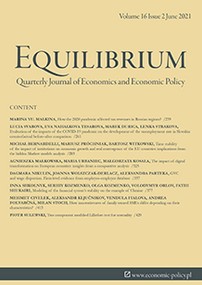How innovativeness of family-owned SMEs differ depending on their characteristics?
How innovativeness of family-owned SMEs differ depending on their characteristics?
Author(s): Milan Stoch, Andrea Folvarčná, Vendula Fialová, Aleksandr Ključnikov, Mehmet CivelekSubject(s): Business Economy / Management, Micro-Economics
Published by: Instytut Badań Gospodarczych
Keywords: innovation; SMEs; succession; family-owned businesses; manufacturing-service sectors;
Summary/Abstract: Research background: SMEs encounter more survival impediments than larger businesses. Innovativeness is a crucial attribute for smaller firms to overcome these barriers since it positively influences their performance, competitiveness, and capability to operate in the long term. However, depending on firm characteristics, the innovativeness of SMEs might differ. Purpose of the article: This research investigates whether the innovativeness of family-owned SMEs differs depending on their size, sector, area of activity, and succession on the sample of 350 family-owned SMEs that operate in Czechia. Methods: The data collected in the Czech Republic in 2020 through the structured self-administered questionnaire were analyzed using Skewness-Kurtosis and Levene's normality tests and Independent Sample T-test to find the differences in SMEs innovativeness depending on their selected characteristics. Findings & value-added: According to the results, SMEs' innovativeness differs depending on their size, industry, and area activity. On the other hand, the analyses confirmed the nonexistence of the differences in SMEs' innovative-ness concerning succession involvement. The region of SMEs' operation, the scope of their activities, and firms' executives' age might be crucial arguments to explain the differences and similarities in these enterprises' innovativeness. Even though the research focuses only on the SMEs located in Czechia, the similarity of the issues all SMEs face when competing with the larger firms worldwide, especially if we take into consideration the countries with a similar level of development and overall institutional business conditions, allows for generalizing our results and might draw readers' attention to this paper. Policymakers, universities, international institutions, and financial institutions might cooperate to create industrial zones, encourage research centers, and provide education and financial support to stimulate SMEs' innovative activities.
Journal: Equilibrium. Quarterly Journal of Economics and Economic Policy
- Issue Year: 16/2021
- Issue No: 2
- Page Range: 413-428
- Page Count: 16
- Language: English

